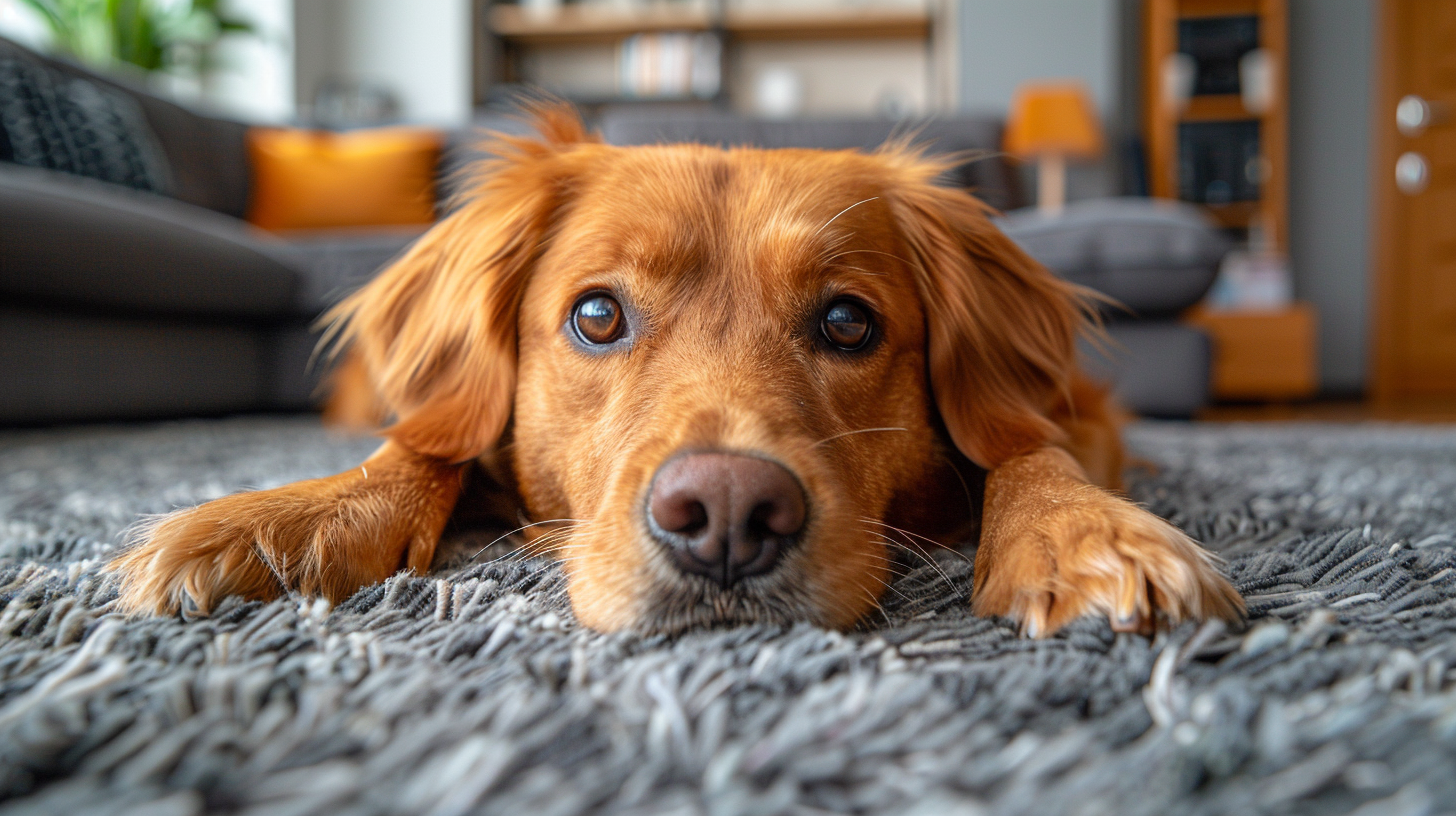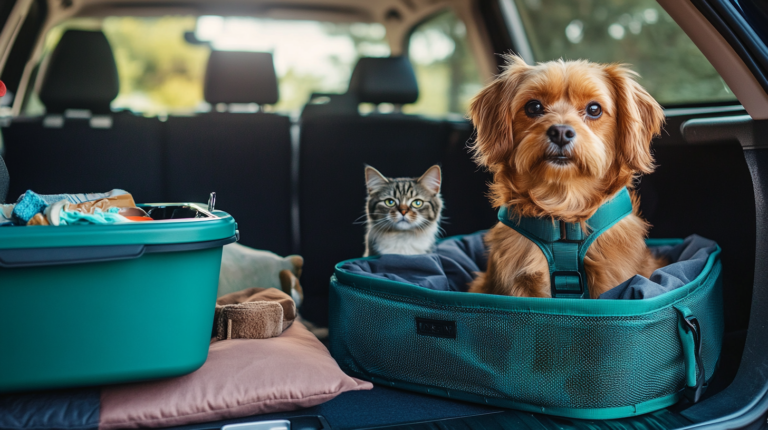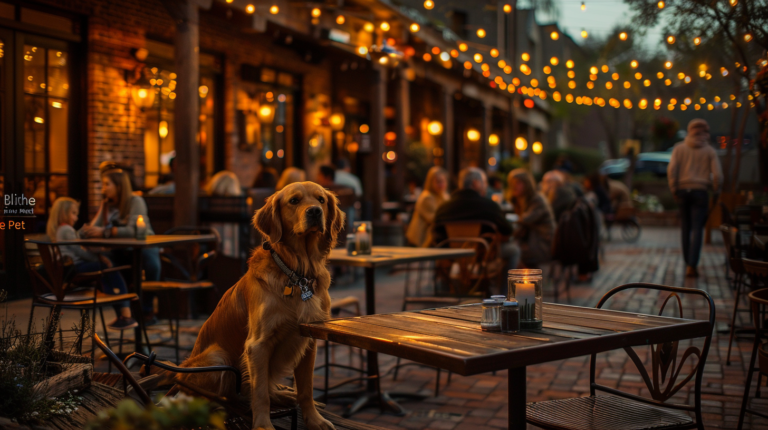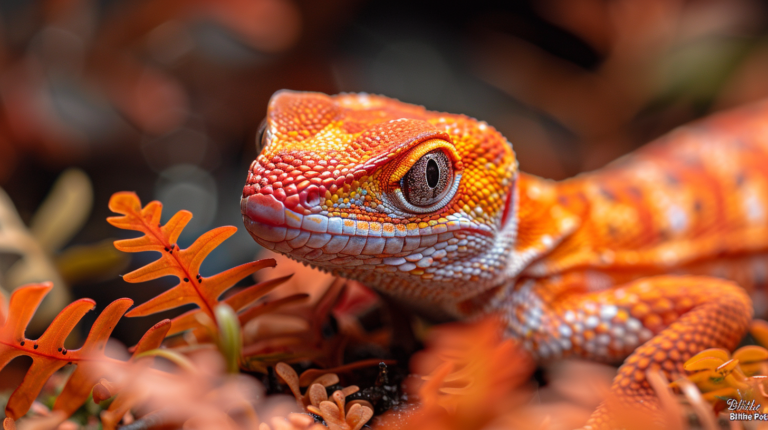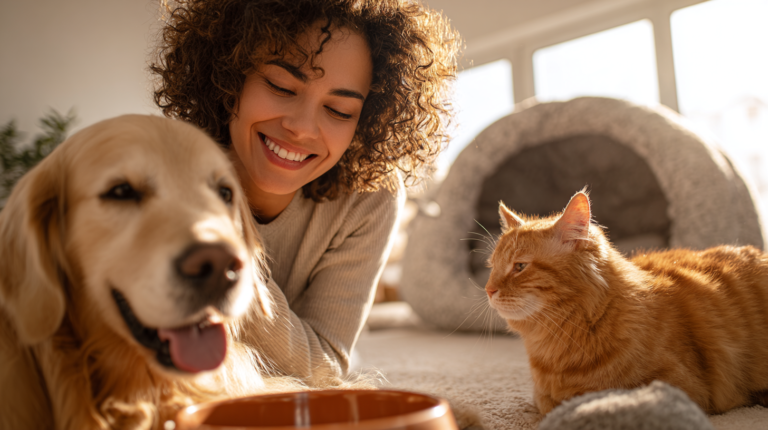Discover 7 powerful ways to keep your pet safe at home with our comprehensive guide covering pet-proofing, toxic hazards, emergency planning, and more essential safety tips.
Table of Contents
Creating a safe environment for your furry family members is one of the most important responsibilities of pet ownership. While our homes are sanctuaries for us, they can harbor unexpected dangers for our curious companions. Whether you’ve just welcomed a new pet into your home or have been a pet parent for years, ensuring your home is pet safe should be a top priority. With pets exploring their surroundings using their mouths and paws, even seemingly harmless household items can pose serious risks.
According to the American Veterinary Medical Association, over 232,000 pets require emergency treatment each year due to household hazards that could have been prevented. This comprehensive guide explores 7 powerful ways to keep your pet safe at home, offering practical solutions to create a secure environment where your pets can thrive without unnecessary risks.
From pet-proofing essential areas to creating emergency plans, these strategies will help you transform your living space into a haven that protects your beloved companions while still maintaining a beautiful, functional home. Let’s dive into these life-saving measures that every responsible pet owner should implement.
1. Pet-Proof Your Living Spaces
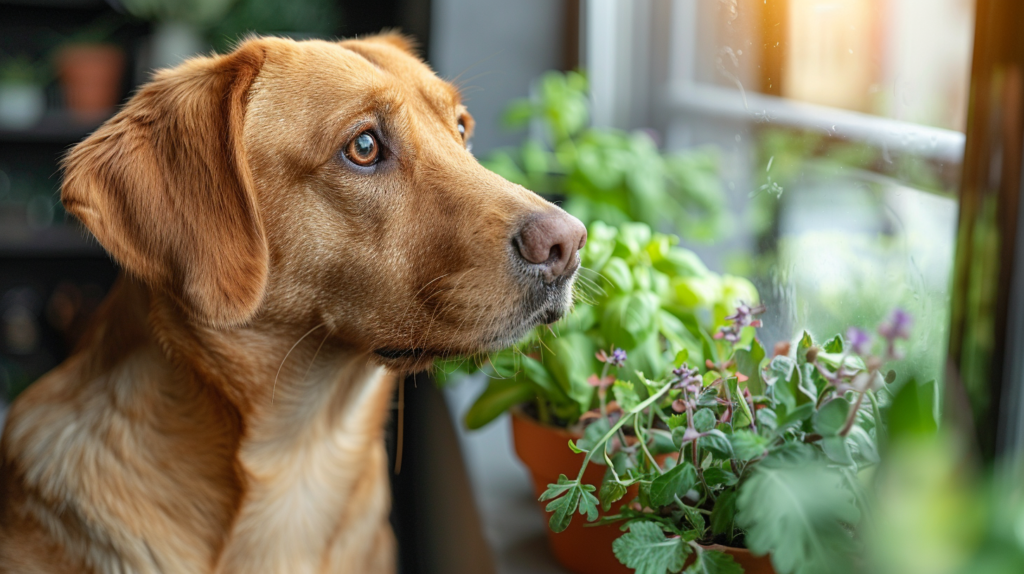
Creating a pet safe at home environment starts with a thorough assessment of your living spaces. Pets, especially young ones, are naturally curious and can find themselves in dangerous situations if proper precautions aren’t taken.
Secure Cabinets and Storage Areas
One of the first steps in pet-proofing your home is securing cabinets and storage areas that contain potentially harmful substances:
- Install childproof latches on cabinets containing cleaning supplies, medications, and chemicals
- Use magnetic locks for more determined pets who might figure out simple latches
- Store all toxic substances in high cabinets completely out of reach
- Consider dedicated locked storage for especially dangerous items
Dr. Maria Johnson, veterinary toxicologist at Pacific Animal Hospital, notes: “Nearly 60% of the emergency cases we see involve pets accessing household chemicals or medications. Simple cabinet locks can prevent thousands of these incidents annually.”
Manage Electrical Cords and Outlets
Electrical hazards represent another significant danger to curious pets:
- Use cord covers or cord management systems to keep wires out of reach
- Secure loose cords with cord clips to walls where pets can’t reach them
- Apply bitter apple spray (pet-safe deterrent) to cords if your pet shows interest in chewing them
- Install outlet covers on unused electrical outlets
- Unplug appliances when not in use if your pet shows interest in them
Remove or Secure Small Objects
Small items can pose serious choking hazards or cause intestinal blockages if swallowed:
- Keep items like buttons, coins, children’s toys, and small craft supplies in secured containers
- Regularly check floors for dropped items that could be dangerous
- Be especially vigilant during holidays when decorations may include small parts
- Consider installing baby gates to restrict access to areas with many small objects
Create Safe Spaces
Designating specific pet-safe zones gives your companions areas where they can relax without restriction:
- Set up comfortable resting areas in rooms that have been thoroughly pet-proofed
- Use baby gates or pet barriers to restrict access to areas that cannot be fully secured
- Provide appropriate toys in these areas to keep pets entertained
- Consider using a crate or playpen for very young pets when supervision isn’t possible
2. Eliminate Toxic Plants and Substances
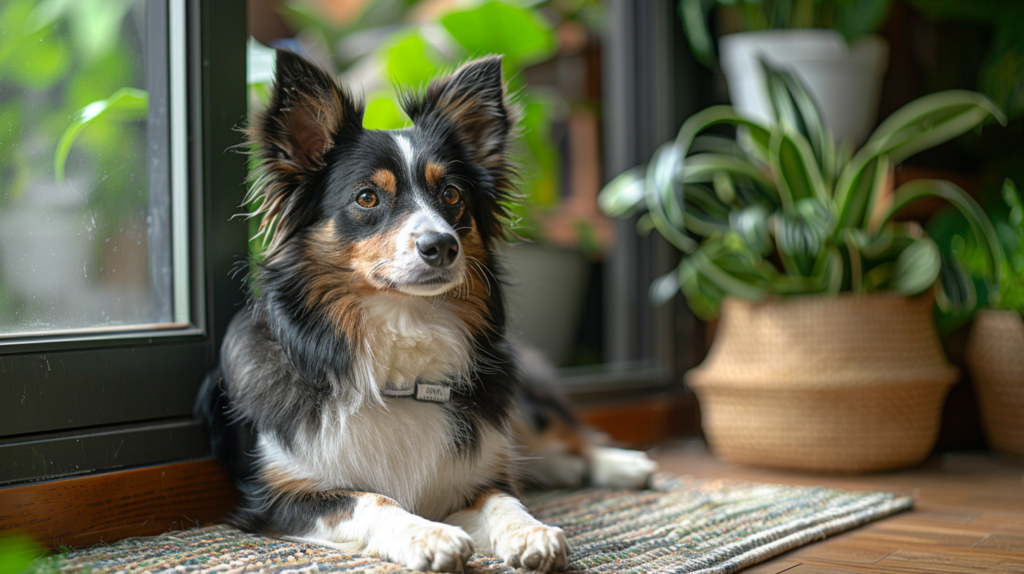
Creating a pet safe at home environment requires careful attention to potential toxins. Many common household plants and substances can be extremely dangerous if ingested by pets.
Remove Dangerous Houseplants
According to the ASPCA Animal Poison Control Center, plant toxicity cases account for approximately 5-10% of all calls they receive annually. Some extremely common houseplants are surprisingly toxic to pets:
| Highly Toxic Plants | Symptoms If Ingested | Safe Alternatives |
| Lilies (cats) | Kidney failure, potentially fatal | Spider plants, Boston ferns |
| Sago palms | Liver failure, seizures | Areca palm, Ponytail palm |
| Philodendron | Oral irritation, vomiting, difficulty swallowing | Calathea, Prayer plants |
| Pothos | Oral irritation, vomiting, swelling | Swedish ivy, African violet |
| Aloe vera | Vomiting, diarrhea, tremors | Haworthia, Echeveria |
| Daffodils | Vomiting, diarrhea, cardiac arrhythmias | Gerbera daisies, Roses |
| Tulips | Irritation to mouth, excessive drooling | Sunflowers, Zinnias |
Properly Store Household Chemicals
Common household chemicals can be extremely dangerous to pets:
- Keep all cleaning products, pesticides, fertilizers, and automotive fluids in locked cabinets
- Store chemicals in their original containers with labels intact
- Clean up spills immediately and thoroughly
- Consider switching to pet-safe cleaning alternatives where possible
- Never leave chemicals unattended when in use
Safely Store Medications
Human medications are among the top causes of pet poisonings:
- Keep all medications, including over-the-counter drugs, in secure containers
- Store medications in cabinets that pets cannot access
- Never leave pills on countertops or tables, even temporarily
- Dispose of unused medications properly
- Be especially careful with commonly prescribed medications that are highly toxic to pets, such as antidepressants, pain relievers, and blood pressure medications
Be Aware of Food Toxins
Many common human foods can be toxic to pets:
- Store these toxic foods where pets absolutely cannot access them:
- Chocolate and caffeine
- Xylitol (found in sugar-free products)
- Grapes and raisins
- Onions and garlic
- Alcohol
- Macadamia nuts
- Raw bread dough
- Consider posting a list of toxic foods on your refrigerator as a reminder for family members and guests
- Train household members never to feed pets from the table
3. Create Pet-Safe Outdoor Spaces
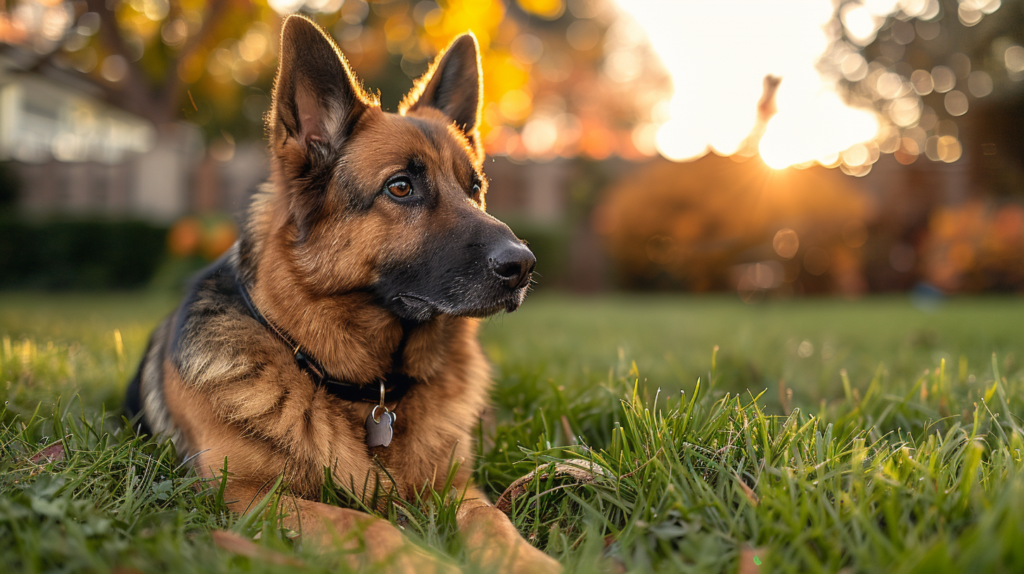
The outdoors presents both joys and hazards for pets. A truly pet safe at home environment includes securing your yard and outdoor areas against potential dangers.
Secure Your Yard Perimeter
Prevent escape attempts and unwanted intrusions:
- Install secure fencing that is appropriate for your pet’s size and abilities
- Check regularly for holes or weak spots in fencing
- Consider dig guards at the base of fences for determined diggers
- Install self-closing gates with secure latches
- For cats, consider cat-proof fencing or a “catio” (enclosed cat patio)
According to a 2023 study by the National Pet Safety Association, homes with secure perimeter fencing experience 78% fewer pet escape incidents than those with incomplete or compromised barriers.
Use Pet-Safe Landscaping
Many common garden plants and landscaping materials can pose risks:
- Research all plants before adding them to your garden
- Remove or fence off toxic plants including:
- Azaleas and rhododendrons
- Oleander
- Foxglove
- Lily of the valley
- Castor bean
- Yew
- Use pet-safe mulch products (avoid cocoa mulch which contains theobromine)
- Choose natural, non-toxic fertilizers and pest control methods
- Create shaded areas where pets can escape the sun
Manage Water Features Safely
Pools, ponds, and other water features require special attention:
- Install fencing around swimming pools
- Consider pool alarms that alert you if something falls into the water
- Provide gentle slopes or pet escape ramps in ponds
- Supervise all water feature access for pets who aren’t strong swimmers
- Cover hot tubs when not in use
Create Comfortable Outdoor Living Areas
Make the outdoors enjoyable and safe:
- Provide sheltered areas that protect from sun, wind, and rain
- Ensure fresh water is always available to prevent dehydration
- Consider elevated beds to keep pets off hot or cold ground
- Create designated bathroom areas with pet-friendly materials
- Install adequate lighting for nighttime supervision
4. Prevent Escape and Implement Identification Systems
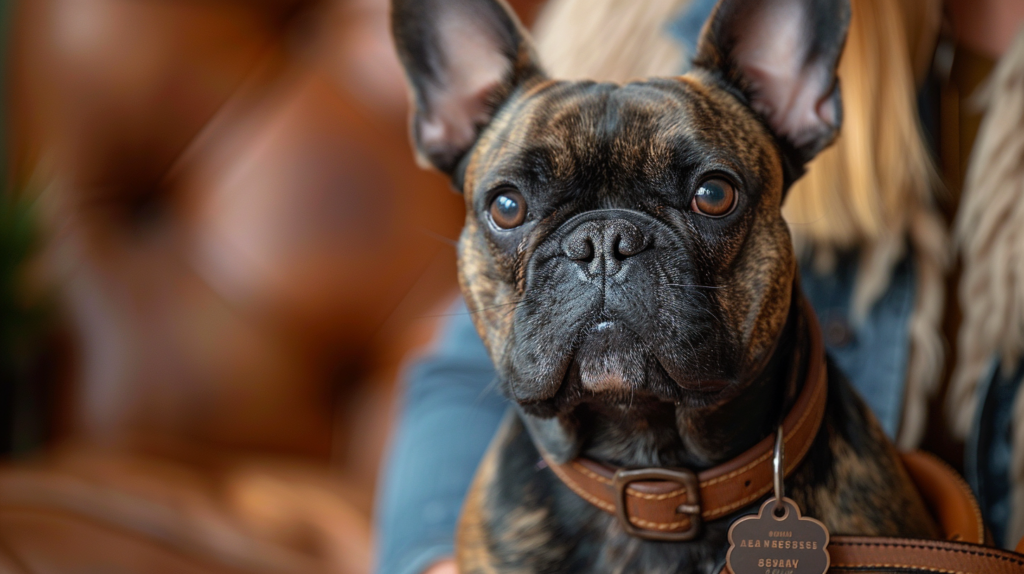
Even with the most vigilant pet safe at home practices, accidents can happen. Implementing robust identification and preventive measures significantly increases the chances of reunion if your pet gets lost.
Microchip Your Pets
Microchipping provides permanent identification:
- Ensure every pet has a microchip implanted by a veterinarian
- Register the microchip and keep your contact information current
- According to HomeAgain Pet Recovery Service, microchipped pets are over 20 times more likely to be returned to their owners than non-microchipped pets
- Have your veterinarian scan the microchip annually to ensure it’s working properly
Veterinarian Dr. Sarah Williams emphasizes: “Microchipping is the single most effective way to ensure a lost pet finds their way home. Unlike collars which can break or be removed, microchips are permanent and provide definitive proof of ownership.”
Use Proper Identification Tags
Visible ID remains critical for quick identification:
- Ensure all pets wear collars with ID tags when appropriate (some pets may need breakaway collars for safety)
- Include your name, phone number, and address on tags
- Consider adding a second phone number of a trusted contact
- Update tags immediately if your contact information changes
- Add vaccination tags as required by local regulations
Implement “Safe Door” Practices
Prevent door-dashing with consistent family protocols:
- Create a double-door system or safety vestibule where possible
- Train family members and guests to check for pets before opening exterior doors
- Use baby gates or pet barriers near frequently used doors
- Consider installing door alarms that notify you when doors are opened
- Use “Pet Inside” door signs to alert visitors
Use Modern Technology
New technologies provide additional safety measures:
- Install pet monitoring cameras to observe your pets when you’re away
- Consider GPS tracking collars for escape-prone pets
- Use smart door/window sensors to alert you of open access points
- Explore virtual fence technologies for yards without physical fencing
- Set up automated pet doors that only open for pets wearing special collar sensors
5. Establish Fire and Emergency Safety Protocols
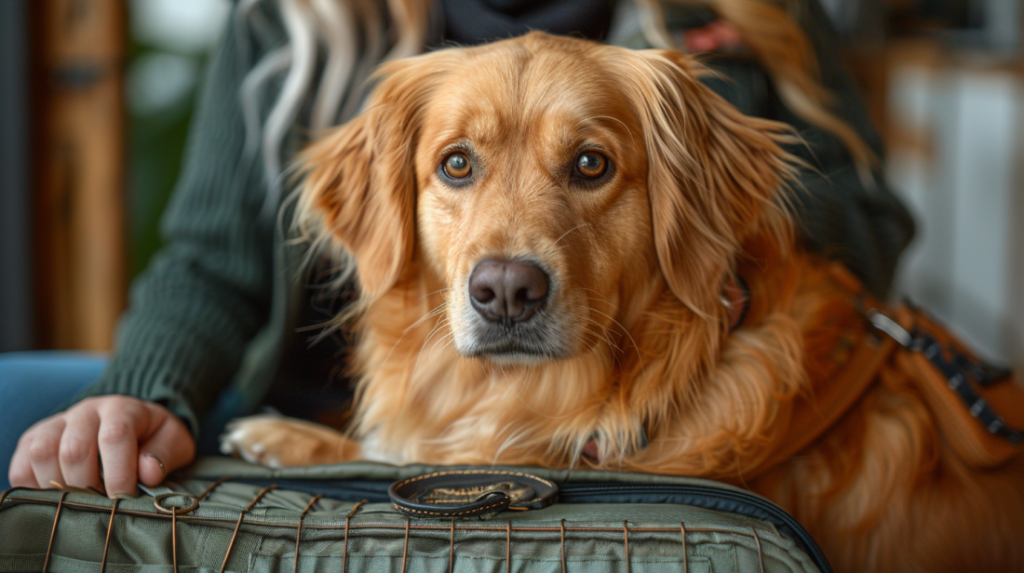
Emergency preparedness is an essential component of keeping your pet safe at home. Having plans in place before disaster strikes can mean the difference between life and death for your beloved companions.
Create a Fire Safety Plan
Fire presents particular dangers to pets who may hide during emergencies:
- Place pet alert window stickers near entrances to inform emergency responders about pets inside
- Install smoke detectors on every level and check batteries regularly
- Consider monitored smoke detection services that can dispatch emergency services when you’re away
- Plan and practice multiple escape routes that include your pets
- Designate specific family members to be responsible for each pet during evacuations
- Keep leashes and carriers easily accessible near exits
The National Fire Protection Association reports that approximately 500,000 pets are affected by home fires each year, with nearly 40,000 pets losing their lives. Having a concrete plan dramatically improves survival rates.
Prepare an Emergency Kit
Be ready for various emergency scenarios:
- Create a pet go-bag containing:
- 7-day supply of food (rotate regularly)
- Water and portable bowls
- Medications and medical records in waterproof container
- First-aid supplies
- Favorite toys and comfort items
- Blankets
- Recent photos of your pets (for identification)
- List of pet-friendly hotels/shelters
- Temporary ID tags with evacuation location information
- Store the kit in an easily accessible location known to all family members
Know Your Emergency Veterinary Options
Be prepared for medical emergencies:
- Post emergency veterinary contact information in a prominent location
- Program emergency vet numbers into all family members’ phones
- Map routes to the nearest 24-hour emergency veterinary facility
- Keep a pet first aid guide and basic supplies at home
- Consider taking a pet first aid course as a family
Create a Buddy System
Ensure your pets are cared for if you’re not home:
- Arrange with trusted neighbors or nearby friends to check on your pets in emergencies
- Exchange house keys and pet care instructions
- Make sure these emergency contacts are familiar with your pets and their routines
- Provide emergency contacts with veterinarian information and feeding instructions
- Consider a reciprocal arrangement where you can help with their pets as well
6. Implement Regular Safety Inspections
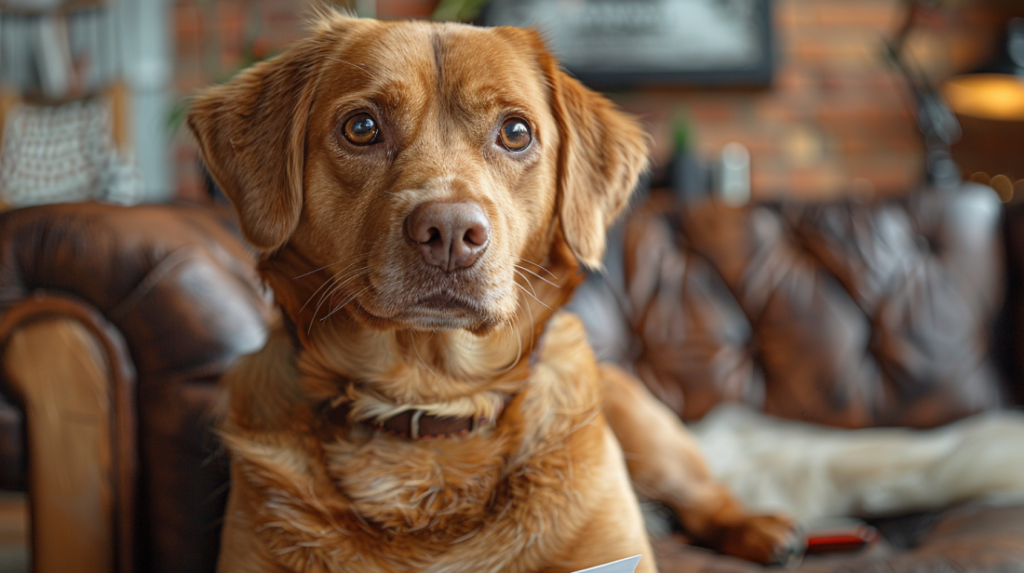
Maintaining a pet safe at home environment requires vigilance and regular safety checks. Potential hazards can develop over time, and staying proactive helps prevent accidents before they occur.
Develop a Safety Checklist
Create a comprehensive checklist tailored to your home:
- Inspect all pet-proofing measures monthly to ensure they remain effective
- Check for new hazards that may have been introduced
- Assess wear and tear on pet containment systems
- Look for chewed electrical cords or damaged outlet covers
- Identify new toxic plants that may have been brought into the home
- Review the security of toxic substance storage
Pet safety expert and author of “Pet-Proofing for Modern Homes,” Lisa Chen, recommends: “Set calendar reminders for monthly safety checks. Being systematic and thorough can identify potential issues before they become dangerous situations.”
Monitor for Structural Issues
Home maintenance problems can create pet hazards:
- Check for loose floorboards or carpet that could cause injury
- Inspect for small spaces where pets could become trapped
- Look for evidence of pest control products used by neighbors that might affect your property
- Examine fencing for new gaps or weaknesses
- Assess the stability of furniture that pets climb on
- Check window screens for security and integrity
Seasonal Safety Reviews
Different seasons present different challenges:
Winter Safety:
- Inspect heating systems for proper functioning and pet safety
- Check for antifreeze leaks in garage and driveway (extremely toxic to pets)
- Assess outside shelters for adequate insulation
- Examine pet sweaters and boots for proper fit before cold weather arrives
Summer Safety:
- Test air conditioning systems to prevent pet overheating
- Check window screens before opening windows in warm weather
- Inspect outdoor water features for algae growth that may be toxic
- Check shaded areas in yard to ensure adequate heat protection
Holiday Safety:
- Conduct special inspections before major holidays
- Check holiday decorations for potential choking hazards
- Assess the stability of Christmas trees and other large decorations
- Review food safety with guests who may not know pet toxins
Delegate Responsibility
Make safety a family affair:
- Assign specific safety check responsibilities to family members
- Create age-appropriate safety tasks for children to help them learn pet responsibility
- Hold monthly family meetings to discuss any new safety concerns
- Keep a safety journal documenting checks and any issues discovered
- Celebrate successful safety records to reinforce the importance of vigilance
7. Train and Socialize Your Pets Appropriately
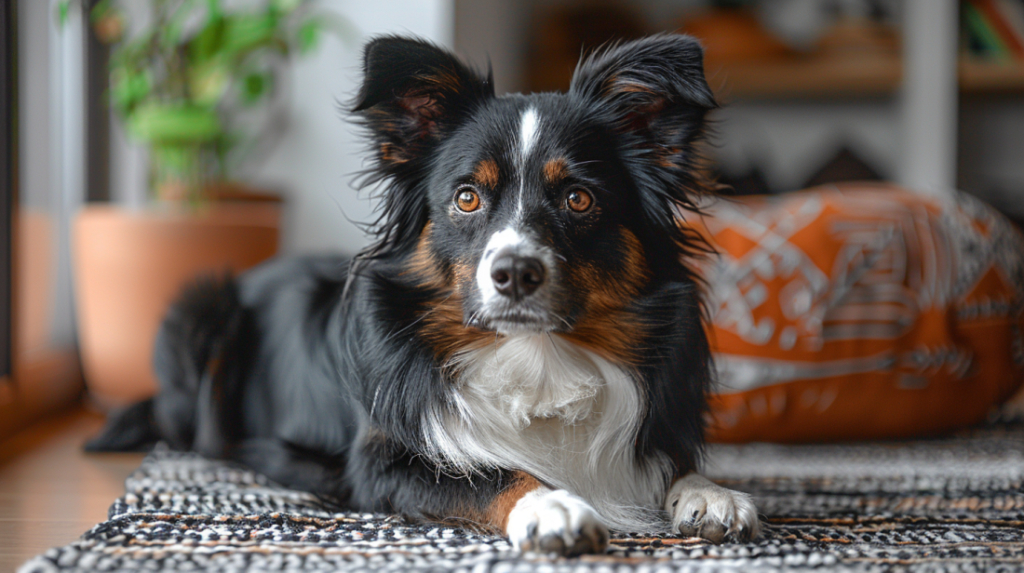
A well-trained, properly socialized pet is inherently safer and easier to manage in emergency situations. Training is a critical component of maintaining a pet safe at home environment.
Basic Obedience Training
Essential commands that can prevent dangerous situations:
- “Leave it” – Teaches pets to avoid potentially harmful objects
- “Come” – Allows you to call your pet away from danger
- “Stay” – Prevents pets from rushing into unsafe areas
- “Drop it” – Instructs pets to release dangerous items
- “Wait” – Teaches patience at doorways to prevent escapes
According to the American Kennel Club, pets who respond reliably to basic commands are 80% less likely to experience preventable accidents in the home.
Certified professional dog trainer Marcus Rodriguez explains: “Training isn’t just about convenience or good behavior; it’s fundamentally about safety. A dog who reliably comes when called might avoid rushing into traffic, while a dog who responds to ‘leave it’ won’t consume that dropped medication.”
Establish Consistent House Rules
Clear boundaries create safer environments:
- Define off-limits areas of the home and enforce consistently
- Establish rules about furniture access
- Create consistent feeding routines to prevent food guarding
- Set boundaries regarding interactions with visitors
- Develop protocols for opening doors and gates
Provide Mental and Physical Stimulation
Bored pets are more likely to get into trouble:
- Schedule regular exercise appropriate for your pet’s age and breed
- Provide enrichment toys that challenge your pet mentally
- Rotate toys to maintain interest
- Consider puzzle feeders to slow eating and provide mental stimulation
- Schedule regular playtime with family members
Address Behavioral Issues Promptly
Don’t ignore problematic behaviors:
- Consult with professional trainers or behaviorists for serious concerns
- Address resource guarding before it escalates
- Work with professionals on separation anxiety that might lead to destructive behavior
- Take aggressive behavior seriously and seek professional help immediately
- Consider the root causes of problematic behaviors rather than just the symptoms
“The most dangerous pet is often one whose early warning signs of stress or behavioral issues have been ignored,” notes veterinary behaviorist Dr. Karen Nelson. “Addressing these concerns early prevents escalation to more serious safety issues.”
Safety Products Worth Considering
To help maintain a pet safe at home environment, consider these proven safety products:
Monitoring and Containment
- PetCube Camera – Allows you to monitor pets remotely and dispense treats
- Whistle GO GPS Tracker – Provides real-time location tracking if your pet escapes
- SureFlap Microchip Pet Door – Only allows access to your microchipped pets
- Carlson Extra Wide Pet Gate – Creates safe boundaries within your home
Pet-Proofing Essentials
- Safety 1st Cabinet Locks – Prevents access to chemicals and medications
- CordAway Cord Protector – Shields electrical cords from curious chewers
- ChildProof Outlet Covers – Prevents electrical hazards
- PetProof Trash Can – Secure garbage containment to prevent access to harmful waste
Emergency Preparedness
- PetSafe Rescue Alert Stickers – Notifies emergency personnel about pets in the home
- Ready Pet Go Emergency Kit – Pre-assembled emergency supplies for quick evacuation
- First Aid Kit for Pets – Essential medical supplies for minor emergencies
- PetTech Pet CPR & First Aid Certification – Online training for pet emergency response
Training and Enrichment
- Positive Reinforcement Clicker – Tool for effective reward-based training
- Kong Classic Dog Toy – Durable puzzle toy for mental stimulation
- Snuffle Mat – Enrichment toy that encourages natural foraging behaviors
- PetSafe Busy Buddy Twist ‘n Treat – Adjustable treat-dispensing toy
FAQ: Pet Safety at Home
What are the most common household dangers for pets?
The most common household dangers for pets include toxic foods (chocolate, xylitol, grapes), household chemicals (cleaning products, antifreeze), medications, poisonous plants, small objects that can be swallowed, electrical cords, and unsecured windows or pools. According to the ASPCA Animal Poison Control Center, they receive over 400,000 cases of potential poisonings annually, with household items topping the list. Regular home safety audits focusing on these common hazards can significantly reduce risks.
How can I make my home safe for a new puppy or kitten?
For new puppies or kittens, get down to their eye level to spot hazards they might access. Secure cabinets containing chemicals, cover electrical cords, remove small objects they could swallow, use baby gates to restrict access to unsafe areas, and remove toxic plants. Consider crate training when supervision isn’t possible. Implement a consistent training program from day one using positive reinforcement. Remember that puppies and kittens are especially curious and will explore with their mouths, so be particularly vigilant during the first few months.
What should I do if my pet ingests something potentially toxic?
If you suspect your pet has ingested something toxic, don’t wait for symptoms to appear. Call your veterinarian or the ASPCA Animal Poison Control Center (888-426-4435) immediately. If possible, identify what was consumed and approximately how much. Do not induce vomiting unless directed to do so by a veterinary professional, as this can sometimes cause more harm. Keep original packaging of any ingested products to help identify ingredients. Time is critical in poisoning cases, so prompt action can be lifesaving.
How can I prepare my pets for emergencies like natural disasters?
Prepare your pets for emergencies by ensuring they’re microchipped and wear ID tags, creating pet emergency kits with food, water, medications, and comfort items, and researching pet-friendly evacuation locations in advance. Practice evacuation drills with your pets to reduce stress during actual emergencies. Keep carriers easily accessible and train pets to enter them willingly. Document your pets’ appearance and medical needs, and arrange emergency care with neighbors in case you’re not home when disaster strikes. Update your emergency plan seasonally as needs change.
What temperature ranges are safe for pets at home?
Most indoor pets are comfortable in temperature ranges that are pleasant for humans, generally between 65-78°F (18-26°C). However, breed, age, and health status affect temperature tolerance. Brachycephalic (flat-faced) breeds, senior pets, and those with certain medical conditions are more sensitive to heat. Signs of overheating include excessive panting, drooling, lethargy, and bright red gums. Cold stress signs include shivering, anxiety, and seeking warmth. Always provide access to fresh water and areas where pets can move to cooler or warmer spots based on their comfort level.
How can I pet-proof my home on a budget?
Pet-proofing on a budget can be achieved by using household items creatively. Use baby gates found at thrift stores to block off unsafe areas, store chemicals in high cabinets secured with child-proof latches, cover electrical cords with split tubing from hardware stores, swap toxic plants for pet-safe alternatives, and create homemade puzzle toys from recyclable materials. Join local pet owner groups to share or trade safety equipment, and focus on training basic safety commands which costs nothing but time. Prevention is always less expensive than emergency veterinary treatment.
Keep Your Pet Safe with BlithePet
For more expert pet care tips and product recommendations, visit BlithePet.com — your trusted source for pet wellness.
Conclusion
Creating a pet safe at home environment requires attention to detail, consistent monitoring, and a proactive approach to identifying and addressing potential hazards. By implementing these seven powerful strategies—pet-proofing living spaces, eliminating toxic substances, creating safe outdoor areas, preventing escapes, establishing emergency protocols, conducting regular safety inspections, and properly training your pets—you can dramatically reduce the risk of accidents and injuries.
Remember that pet safety is an ongoing process rather than a one-time effort. As your home changes, as seasons shift, and as your pets age, different safety concerns will emerge. Staying vigilant and adaptable is key to maintaining a secure environment for your beloved companions.
The peace of mind that comes from knowing you’ve taken comprehensive steps to protect your pets is invaluable. Not only does it prevent heartbreaking accidents and expensive emergency veterinary visits, but it also strengthens the bond between you and your pet by creating an environment where they can thrive with confidence and security.
Have a similar experience with your pet? Share it in the comments below!

